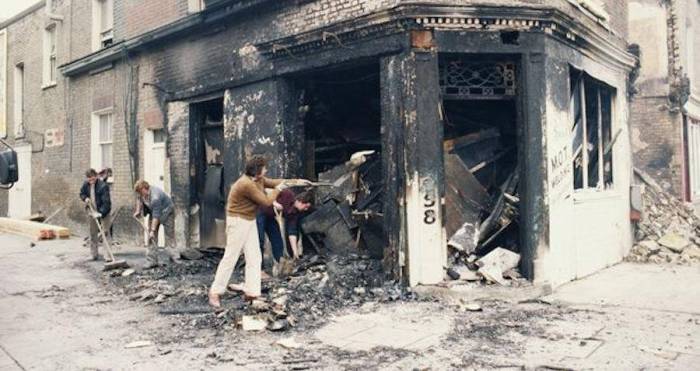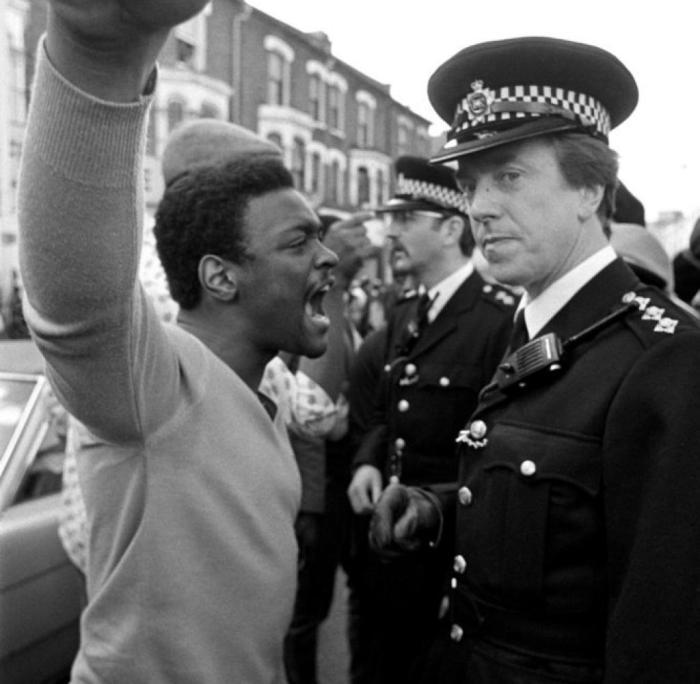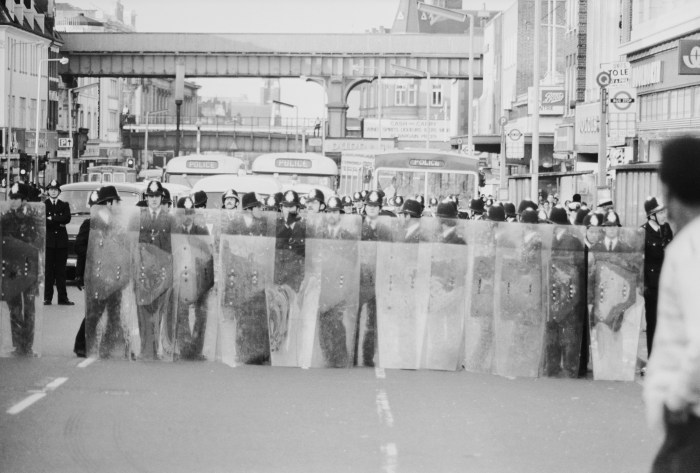The poem’s allusion to the 1981 Brixton riot serves as a powerful literary device, enriching its meaning and connecting it to broader historical and social issues. By examining the specific lines and passages that evoke this significant event, we delve into the poem’s nuanced exploration of social unrest, racial tensions, and the complexities of urban life.
The riot, a defining moment in British history, provides a backdrop against which the poem’s themes and messages resonate deeply. The allusion not only adds historical depth but also invites readers to reflect on the ongoing struggles for equality and justice that continue to shape our world.
The Poem’s Allusion to the 1981 Brixton Riot

Contextual Background
The 1981 Brixton riot was a significant event in the socio-political landscape of the United Kingdom. It occurred in the London district of Brixton on April 10-12, 1981, and was sparked by the police’s controversial “sus” law, which allowed them to stop and search anyone they suspected of committing a crime.
The riot was a manifestation of the underlying tensions and inequalities that had been simmering in the community for years, including racial discrimination, poverty, and unemployment.
The riot resulted in widespread looting, arson, and violence. Over 200 people were injured, and hundreds of buildings were damaged or destroyed. The riot also had a significant impact on race relations in the United Kingdom, as it highlighted the deep-seated racial tensions that existed within society.
Allusion in the Poem, The poem’s allusion to the 1981 brixton riot
The poem “Brixton Riot” by Linton Kwesi Johnson alludes to the 1981 Brixton riot through the use of vivid imagery and powerful language. The poem describes the events of the riot from the perspective of a participant, capturing the chaos and violence that unfolded.
The poem begins with a description of the police raid that sparked the riot: “The pigs dem come in with a bang/And a crash/And a flash/And a boom.” The use of the term “pigs” to refer to the police is a common metaphor in reggae music, and it serves to highlight the speaker’s anger and frustration with the authorities.
The poem goes on to describe the violence that ensued: “Fire burn and a blaze/And a fire burn and a blaze/And a fire burn and a blaze.” The repetition of the phrase “fire burn and a blaze” creates a sense of urgency and chaos, and it conveys the speaker’s sense of being overwhelmed by the events unfolding around him.
Impact of the Allusion
The allusion to the Brixton riot in the poem serves to enhance its meaning and significance in several ways. First, it connects the poem to a broader historical and social context, and it helps to illuminate the underlying causes of the riot.
Second, the allusion adds a sense of authenticity and immediacy to the poem, as it allows the reader to experience the events of the riot through the eyes of a participant.
Finally, the allusion to the Brixton riot allows the poem to explore the broader themes of race, class, and inequality. The poem highlights the ways in which these factors contributed to the riot, and it calls attention to the need for social justice and equality.
Interpretation and Analysis
There are multiple ways to interpret the poem’s allusion to the Brixton riot. One interpretation is that the poem is a simple recounting of the events of the riot. However, the poem can also be interpreted as a more complex exploration of the underlying causes of the riot, and of the broader issues of race, class, and inequality.
The poem can also be analyzed from a variety of critical perspectives. For example, a Marxist critic might argue that the poem is a critique of the capitalist system, which they believe creates the conditions for poverty, unemployment, and racial discrimination.
A feminist critic might argue that the poem is a critique of patriarchy, which they believe contributes to the violence and oppression that is often directed at women.
Conclusion
The poem’s allusion to the 1981 Brixton riot is a powerful and effective way to explore the themes of race, class, and inequality. The poem provides a vivid and moving account of the events of the riot, and it helps to illuminate the underlying causes of the riot.
The poem also allows the reader to experience the events of the riot through the eyes of a participant, and it calls attention to the need for social justice and equality.
FAQ Resource
What is the significance of the 1981 Brixton riot?
The 1981 Brixton riot was a major social and political event in the United Kingdom, sparked by tensions between the black community and the police. It highlighted the deep-seated racial inequalities and social unrest that plagued British society at the time.
How does the poem’s allusion to the riot enhance its meaning?
The allusion to the Brixton riot adds historical context and depth to the poem, connecting it to broader issues of social justice and racial inequality. It allows the poet to explore the riot’s impact on the community and its lasting legacy.
What literary devices are used to create the allusion?
The poet employs imagery, symbolism, and metaphor to create the allusion to the Brixton riot. Specific lines or passages evoke the riot’s violence, the sense of community, and the ongoing struggle for equality.


